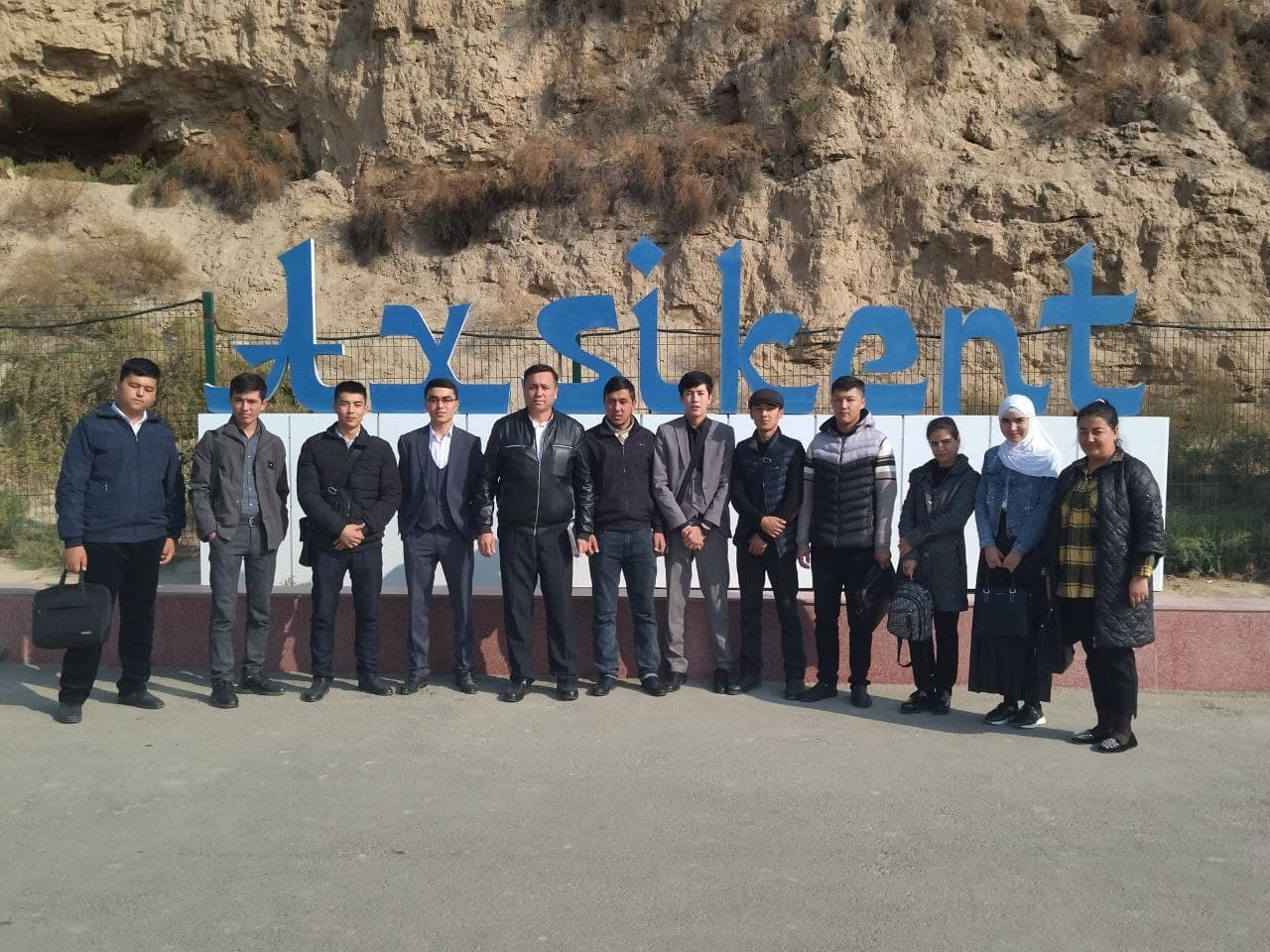SDG. 11.2.4 public access to open spaces
On November 11, 2021, the tutor of the Faculty of Economics and Management, D. Maksudov, together with the students of the 55-IQT-21 group, in order to preserve the heritage of our ancestors, show our love for them, and properly organize their free time, visited the archaeological site of Aksikent in the Toragorgon district. They visited the monument "Open-air" museum.
The history of Uzbek statehood goes back several thousand years. Clear evidence in this regard is evident from the sources of the cities and towns whose ruins have been preserved in the territory of our country. One of such ancient states is the Aksikent monument, which testifies to the state of Fergana (Davan). The ruins of this ancient city speak of our great history. Today, the Aksikent monument is located on the right bank of the Syrdarya River, in the territory of Shahand village, Torakorgan district, Namangan region.
Aksikent was founded in the III century BC, and was the capital of the ancient Ferghana state, one of the main cities of the Great Silk Road. In historical sources, in particular, in "Boburnoma", a lot is written about the special importance of this city. Since ancient times, there was an underground water facility here, so it was considered convenient for defense.
The city consisted of Ark, inner and outer city. Crafts such as glassmaking, pottery, blacksmithing, and weaponry developed here in their time. In 1219, the city was completely destroyed by the Mongols. The new city of Akhsi, built 5-7 kilometers west of the old site of the castle, dates back to the 14th-17th centuries. By 1620, a huge city was destroyed by an earthquake.
Today, about 60 hectares of the ruins have been preserved, and it is the largest archaeological monument in the Fergana Valley. Archaeologists have excavated a blacksmith's workshop, the remains of a bathhouse dating back to the 10th-13th centuries, soldiers' quarters, a mosque, defense walls, underground irrigation networks, a craftsman's quarter, the ruler's residence - Ark.
To the west of the ruins of Akhsikent, another medieval city ruins have been found. Academician Ya. Gulomov and archaeologist I. Ahrorov were the first to prove that there were two cities of different eras here, one of which was ancient Akhsikat and the other was Akhsi, where Babur was born.
Zahiriddin Muhammad Babur mentioned Ahsikent in the chapter of the events of 1494 in his work "Boburnoma". "Akhsi is one of the cities on the northern side of Sayhun water. In the books they write Ahsikat. For example, Asiriddini the poet is called Asiriddini Ahsikati. There is no bigger city in Ferghana after Andijan.
Akhsi is on the road of nine yards to the west from Andijan. Umarshaikh Mirza made it the capital. Sayhun river flows below the fortress. The fortress is located on a high cliff. Instead of a trench, there are deep ravines. Umarshaikh Mirza, who made it the capital, once or twice dug more ravines from outside. There is no such strong fortress in Ferghana. Their neighborhoods are located one shari'a away from the fortress. The saying "Where is the village and where are the trees?" is said for Akshi. Melons are good. One type of melon is called "Mirtemuri" and it is not known that such melons exist anywhere else. Bukhara melon is famous. When I took Samarkand, I brought melons from Akhsi and Bukhara and slaughtered them in one sitting. Akhsi melon had no equal. Hunting birds will be very good. The Akhsi side of the Sayhun River consists of a steppe. There will be a lot of white deer. The side of Andijan is a grove; there are a lot of reindeer, mountain goats and wild hares. Most of them will be very fat," wrote the great general.
The weapons made in Akhiskent are known to the world as "Damascus swords" and were sold in the markets of Damascus in the West and China in the East.
As a result of the latest excavations in Akhsi and its neighboring areas, many unique finds were obtained.
Also, today in Namangan, a museum is operating in the scientific-educational and architectural complex of "Akhsi Sayyids". At the moment, there are 516 exhibits in the Museum of Antiquities.
According to the order of President Shavkat Mirziyoyev, great works have been started to preserve and research the historical monument of Akhsikent, to create its true history. State unitary enterprise "Akhsikent" Directorate for protection and research of archaeological heritage object" was established.
This monument is important in increasing the tourism potential of Namangan region. Presentations about ancient Akhsikent are also held at tourist exhibitions in our country and abroad. As a result, interest in the historical monument is increasing among local and foreign tourists. So far, tourists from countries such as Belgium, Austria, Japan, South Korea, Russia, Iran, Pakistan, and India have visited. A special concept has been developed for the purpose of researching the step, increasing its attractiveness and the flow of tourists. Currently, on this p



